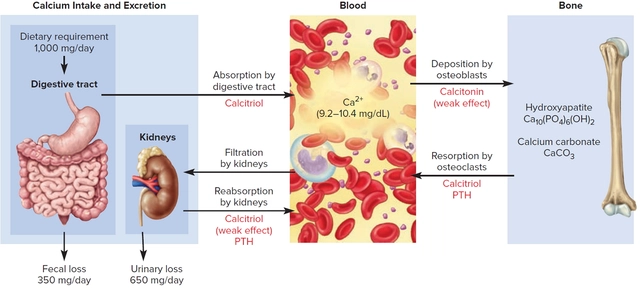Hearing Solution Comparison Tool
Hearing Loss Assessment
Select your hearing loss level to see which hearing solution is most appropriate for you
Hearing Solution Comparison
Hearing Aids
Amplifies sound for better listening
Cochlear Implants
Bypasses damaged hair cells to directly stimulate auditory nerve
When everyday conversation feels like a blur, Cochlear implants are electronic devices that bypass damaged parts of the ear and directly stimulate the auditory nerve. They turn sound into electrical signals the brain can understand, giving people with profound or severe hearing difficulty a chance to hear speech, music, and environmental sounds again.
What Is Severe Hearing Loss?
Severe hearing loss refers to a condition where a person can only detect sounds louder than 71 decibels (dB) and often misses crucial speech cues. The World Health Organization classifies it as a hearing threshold between 71‑90 dB in the better ear. Typical causes include genetic factors, long‑term exposure to loud noise, viral infections, or age‑related degeneration of the inner ear.
How Cochlear Implants Work
The system consists of an external microphone, a sound processor, and an internal receiver‑stimulator implanted under the skin. The microphone picks up sound, the processor converts it into a digital code, and the implanted electrode array delivers tiny electric pulses to the auditory nerve. This bypasses the damaged hair cells in the cochlea, which are responsible for translating vibrations into neural signals.
Key Benefits for Adults
- Improved speech perception in quiet environments-most adult recipients experience a 30‑40 % increase in word recognition scores within six months.
- Greater independence in social settings, reducing reliance on lip‑reading or sign language.
- Enhanced safety, as users can hear alarms, traffic, and approaching hazards.
- Better mental health outcomes; studies show a 25 % drop in depressive symptoms after implantation.
These gains are documented in large‑scale trials conducted by the FDA and leading university audiology departments.
Benefits for Children
When implanted before the age of three, children can develop near‑normal language skills. Early implantation supports:
- Acquisition of spoken language at rates comparable to hearing peers.
- Academic progress-students with implants often achieve reading levels within one grade of their classmates.
- Social integration, reducing stigma associated with sign‑only communication.
Long‑term follow‑up studies reveal that pediatric recipients who receive implants before age two score an average of 85 % on standardized speech perception tests by age five.

Comparing Cochlear Implants to Hearing Aids
| Feature | Cochlear Implants | Hearing Aids |
|---|---|---|
| Suitable hearing loss level | Severe‑to‑profound (>70 dB) | Mild‑to‑moderate (<70 dB) |
| Sound source | Electrical stimulation of auditory nerve | Amplification of acoustic sound |
| Speech perception improvement | 30‑40 % gain in word recognition | 10‑20 % gain |
| Maintenance | Implant surgery + periodic map adjustments | Battery changes, regular cleaning |
| Typical cost (USD) | $30,000‑$50,000 total | $1,000‑$3,000 |
While hearing aids remain the first line of treatment, cochlear implants become the clear winner for those who fall outside the amplification range.
Eligibility and Evaluation Process
Before surgery, a thorough assessment by an audiologist and otolaryngologist is mandatory. The typical steps include:
- Pure‑tone audiometry to confirm the degree of loss.
- Imaging (CT or MRI) to examine the inner ear anatomy.
- Speech‑in‑noise testing to gauge real‑world communication challenges.
- Counseling sessions covering expectations, risks, and post‑operative therapy.
Candidates must demonstrate limited benefit from optimally fitted hearing aids and have functioning auditory nerve pathways.
Post‑Implant Rehabilitation
Success hinges on structured auditory training. Therapy focuses on:
- Sound discrimination exercises to help the brain interpret new electrical cues.
- Speech‑reading integration for the first few weeks.
- Family involvement-spouses and parents play a critical role in reinforcing listening skills at home.
Most centres schedule weekly sessions for the first three months, then taper to monthly check‑ins. Progress is tracked via the speech perception scores and quality‑of‑life questionnaires.

Common Concerns and Myths
Potential recipients often wonder whether implants are painful or unsafe. Modern surgical techniques use local anesthesia and take under two hours. Complication rates are low-about 2 % for infections and less than 1 % for device failure. The devices are MRI‑compatible (with certain limits) and have a lifespan of 15‑20 years, after which a simple re‑implant can be performed.
Real‑World Stories
Maria, a 42‑year‑old teacher from Wellington, struggled to hear her students’ whispers. After her implant, she reported “I finally hear the laughter of my kids and the rustle of pages in the classroom.” Similarly, 7‑year‑old Liam, diagnosed with congenital profound loss, began speaking clearly within eight months of activation, catching up to his peers in reading.
Where to Find Qualified Centers
In New Zealand, the leading cochlear implant programmes are based at Auckland Hospital, Christchurch Medical School, and Wellington’s Regional Audiology Clinic. These centres adhere to FDA guidelines and have multidisciplinary teams that include surgeons, audiologists, speech therapists, and psychosocial counselors.
Bottom Line
For anyone living with severe hearing difficulty, cochlear implants offer a proven pathway back to meaningful sound. They boost speech perception, restore safety cues, and improve emotional wellbeing-benefits that far outweigh the upfront cost when you consider the long‑term quality‑of‑life gains.
Can adults benefit from cochlear implants as much as children?
Yes. While children often achieve near‑normal language development, adults experience significant improvements in speech perception, social interaction, and mental health. Studies show an average 30‑40 % gain in word recognition for adult users.
What are the main risks associated with cochlear implant surgery?
Risks are low. The most common complications are minor infections (≈2 %) and occasional device failure (<1 %). Advanced surgical techniques and strict sterilisation protocols keep serious adverse events rare.
How long does the implantation process take?
The entire pathway-from hearing evaluation to activation-typically spans 3‑6 months. The surgical procedure itself lasts 1‑2 hours, followed by a few days of post‑op monitoring.
Are cochlear implants covered by health insurance in New Zealand?
Public funding is available for eligible candidates through the Ministry of Health. Private insurers also offer partial reimbursement, especially for adult recipients.
What is the average lifespan of a cochlear implant device?
Modern implants are designed to last 15‑20 years. When the device reaches the end of its functional life, a straightforward re‑implant surgery can replace it.






hema khatri
October 23, 2025 AT 19:20Wow!!! Coming from India, it’s amazing to see technology breaking barriers!!! Cochlear implants are a true testament to our nation’s scientific progress!!! They give voice to those who thought silence was forever!!! Proud of Indian engineers and doctors pushing these innovations forward!!!
Jennell Vandermolen
October 23, 2025 AT 20:43It's wonderful to see such enthusiasm; the progress benefits many people worldwide.
Mike Peuerböck
October 23, 2025 AT 22:06The advent of cochlear implantation represents a paradigm shift in auditory rehabilitation.
By directly energizing the auditory nerve, these devices circumvent the defective mechanotransduction of the hair cells.
Clinical trials have documented a remarkable ascent in speech discrimination scores, often exceeding forty percent within half a year.
Moreover, patients report a resurgence of environmental awareness, perceiving alarms, sirens, and conversational murmurs with newfound clarity.
This auditory renaissance is frequently accompanied by an amelioration of depressive symptomatology, as evidenced by longitudinal surveys.
Pediatric implantation before the age of three yields language acquisition trajectories that parallel those of hearing peers.
Such early intervention fosters neuroplasticity, allowing the central auditory pathways to mature under authentic acoustic stimulation.
The procedural safety profile remains robust, with surgical complications occurring in less than two percent of cases.
Financial considerations, while nontrivial, are increasingly mitigated by insurance coverage and governmental subsidies.
In educational settings, children equipped with implants demonstrate reading proficiency within a single grade range of their non‑affected classmates.
Social integration also improves, as auditory feedback reduces reliance on visual cues and diminishes stigmatization.
It is noteworthy that the technology continues to evolve, with newer electrode arrays offering finer spectral resolution.
Future research is poised to integrate wireless power transfer, potentially obviating the need for external battery packs.
The interdisciplinary collaboration among otologists, engineers, and speech therapists underscores the holistic nature of this advancement.
In sum, cochlear implants constitute a transformative avenue for restoring hearing, enhancing quality of life, and reshaping societal inclusion.
Simon Waters
October 23, 2025 AT 23:30Some say the implant data is being used to control thoughts.
Vikas Kumar
October 24, 2025 AT 00:53India’s scientific community has contributed significantly to hearing research. Supporting homegrown solutions strengthens our national health independence.
Celeste Flynn
October 24, 2025 AT 02:16Cochlear implant candidacy typically requires a hearing loss greater than 70 dB in the better ear, limited benefit from properly fitted hearing aids, and intact auditory nerve function. Pre‑operative imaging assesses cochlear anatomy, while speech perception tests gauge residual hearing. Post‑implant rehabilitation includes auditory training and regular audiologist follow‑up to fine‑tune the processor settings.
Shan Reddy
October 24, 2025 AT 03:40Thanks for breaking that down; the rehab part is often overlooked but essential for real‑world benefit.
CASEY PERRY
October 24, 2025 AT 05:03Implant efficacy is quantified via CNC word scores, SNR‑50 thresholds, and cortical auditory evoked potentials.
Naomi Shimberg
October 24, 2025 AT 06:26While such metrics are useful, they obscure the psychosocial dimensions that truly determine patient satisfaction.